Buy Colored Contacts Without a Prescription Safely | 2025 Guide
Thinking about transforming your look with new eye color? While the search for colored contacts without a prescription is common, it's crucial to understand the rules to protect your vision. These lenses are medical devices, and buying them without a proper fitting can lead to serious eye health risks. This guide provides the core value you need: showing you how to safely and legally get the cosmetic lenses you desire. We'll walk you through obtaining the correct prescription, which is the key to unlocking a world of safe options. Just like you'd ensure the authenticity of premium konishi frames japan, treating your contact lenses with the same care is essential. Ready to find your perfect, vibrant new look without compromising on safety? Explore the stunning and safe collection at the link above.
Understanding Colored Contact Lenses in 2025
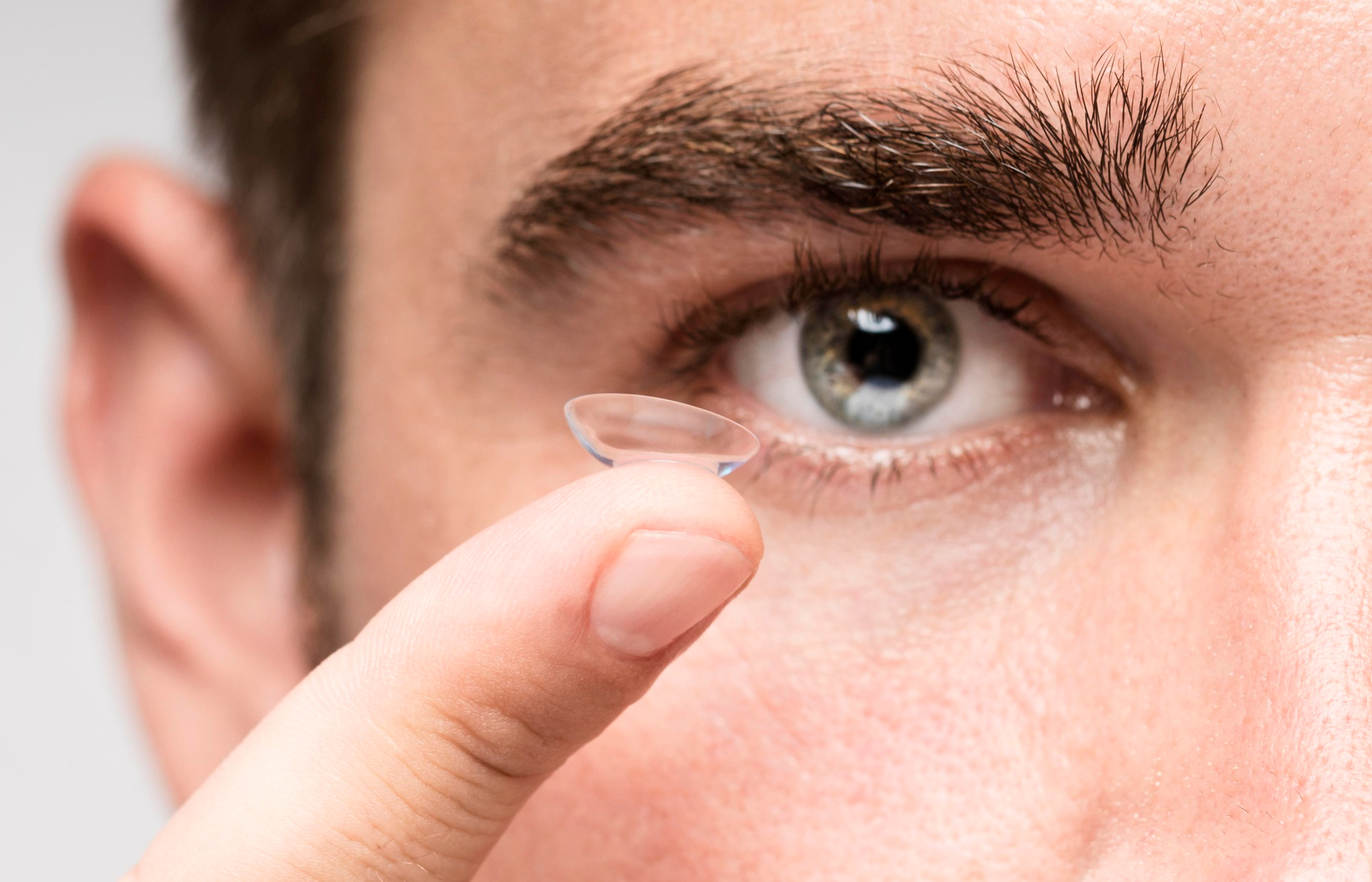
Colored contact lenses are more than just a novelty item; they are a versatile accessory for personal expression. These medical devices, worn directly on the cornea of the eye, can subtly enhance, or completely transform your natural eye color. Whether you're seeking a minor tweak or a dramatic change, there's a type of lens designed for your goal.
What are the Different Types of Colored Contact Lenses?
The world of colored contacts is diverse, with several distinct types available to achieve different effects. Understanding these categories is the first step to finding your perfect pair.
Enhancement Tints: These lenses have a translucent tint designed to boost your natural eye color, not change it entirely. If you have light blue eyes and want to make them appear a more vibrant sapphire, an enhancement tint is the perfect choice. They add depth and definition.
Visibility Tints: Often mistaken for color-changing lenses, visibility tints are actually functional. They have a very faint light blue or green tint added to make the lens easier to see during insertion and removal, or if you drop it. This tint is so light it doesn't affect your eye color.
Opaque Tints: For those who want a complete transformation, opaque tints are the way to go. These lenses feature a solid, non-transparent color pattern that completely masks your natural eye color. They are ideal for people with dark eyes who wish to try out lighter shades like hazel, grey, or light blue.
Cosmetic & Theatrical Lenses: Also known as special-effect lenses, these are all about creating a bold, often unnatural look for costumes, Halloween, or theatrical performances. Think vibrant red for a vampire costume, cat-eye slits, or even all-black sclera lenses for a truly spooky effect.
Circle Lenses: Originating from Asia and popular in beauty circles, circle lenses have a dark outer ring that makes your iris appear larger. This creates a "doll-eye" effect, making your eyes look bigger, brighter, and more defined.
Why Do People Wear Colored Contacts?
The motivations for wearing colored contacts are as varied as the lenses themselves. They serve purposes ranging from simple cosmetic updates to providing a major confidence boost.
Cosmetic Enhancement: The most common reason is simply to change one's appearance. Just as you might choose a new hair color or a stylish outfit, changing your eye color can be a fun way to refresh your look. The right accessory can define a style, much like a classic pair of persol sunglasses adds a touch of timeless elegance to any ensemble. Non-prescription colored contacts allow for this kind of aesthetic experimentation.
Costume and Theatrical Purposes: For actors, cosplayers, and Halloween enthusiasts, colored contacts are an essential tool. They help create a more authentic and convincing character, whether it's achieving the signature eye color of an anime hero or the chilling gaze of a movie monster.
Confidence Boost: A change in appearance can have a profound psychological effect. Many users report feeling more confident, attractive, and outgoing when wearing colored lenses that they feel enhance their features. It's a simple change that can lead to a significant boost in self-esteem.
Corrective Vision: You don't have to sacrifice clear sight for style. Many colored contact lenses are available with prescription powers to correct vision problems like nearsightedness (myopia) or farsightedness (hyperopia), combining the function of regular contacts with the aesthetic appeal of colored ones.
Exploring these different types and motivations can help you decide which lenses are right for you. If you're ready to experiment with your look for cosmetic reasons or an upcoming event, the next step is to find a collection that matches your vision. To see a wide variety of styles, from natural enhancement tints to bold opaque lenses, browse this extensive selection of colored contacts without a prescription to find the perfect pair for your transformation.
The Legal Landscape of Colored Contacts in 2025

Navigating the rules around purchasing colored contacts can be confusing. While they are often seen as a simple cosmetic accessory, they are treated with more seriousness by health authorities, and for good reason. Understanding the regulations is key to safely enjoying your new look.
Why a Prescription is Usually Required for Colored Contacts
In the United States, the Food and Drug Administration (FDA) classifies all contact lenses, including non-corrective (plano) colored lenses, as medical devices. This classification is not meant to be an inconvenience; it’s a crucial safety measure.
A prescription for colored contacts contains more than just a power for vision correction. It includes vital measurements like your base curve (the curvature of your cornea) and diameter. A proper fit, determined by an eye care professional, is essential to ensure the lens sits correctly on your eye, allowing for adequate oxygen flow and preventing irritation or damage. Without this professional fitting, you risk wearing a lens that is too tight or too loose, which can lead to serious eye health issues.
What Happens When You Skip the Prescription for Colored Contacts?
Attempting to buy colored contacts without a prescription might seem like a convenient shortcut, but it exposes you to significant risks. The regulations are in place to protect you from these exact dangers.
Firstly, purchasing from a vendor that doesn't ask for a prescription is a major red flag. These are often unauthorized sellers operating online, at flea markets, or in beauty salons not licensed to dispense medical devices. These sales are illegal in many regions, and the products they sell may not be FDA-approved, potentially containing harmful materials or dyes.
Secondly, without a professional fitting, you're guessing what size and shape lens your eye needs. An ill-fitting lens can slide around, causing discomfort and blurred vision. More seriously, it can lead to corneal abrasions (scratches on your eye), infections, and in severe cases, permanent vision loss. You also miss out on critical professional guidance. An eye doctor teaches you how to properly insert, remove, and disinfect your lenses—steps that are vital for preventing infections. Protecting your eyes is paramount, whether it's from ill-fitting contacts or from the sun's UV rays when searching for the right pair of sun glasses near me.
While obtaining a fitting is a critical first step, we understand you're eager to find the perfect style. Once you have your parameters, you can explore a vast array of safe and stunning options online. To see a wide selection from reputable sources that adhere to safety standards, you can browse a huge collection of colored contacts without a prescription to find a style that's right for you.
The Hidden Dangers of Non-Prescription Colored Contacts
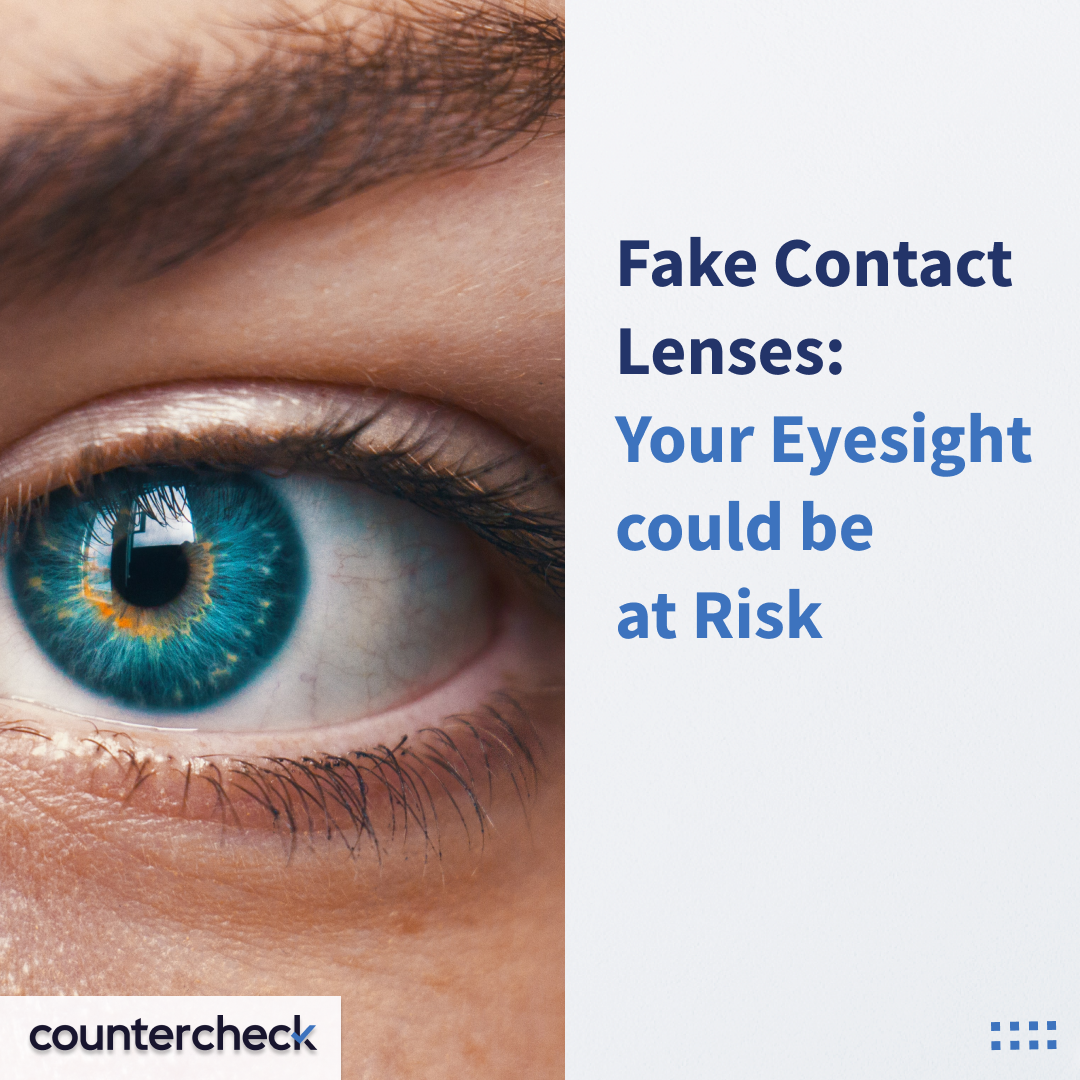
While the idea of instantly changing your eye color is exciting, obtaining colored contacts without a prescription from an unregulated source opens the door to a host of hidden dangers. These risks are not just minor inconveniences; they can have lasting consequences for your vision and overall eye health.
Health Risks You Can't Ignore with Non-Prescription Lenses
Buying lenses without a proper fitting from an eye care professional is a gamble with your eyesight. The potential for damage is significant and multifaceted, directly stemming from a "one-size-fits-all" approach that simply doesn't work for a medical device.
An ill-fitting lens can cause corneal abrasions, which are painful scratches on the delicate surface of your eye. These scratches not only cause discomfort and redness but also create an entry point for dangerous microbes, leading to severe bacterial, viral, or even fungal infections that can be difficult to treat.
Furthermore, your eyes might have an allergic reaction to the materials or dyes used in unregulated lenses. This can manifest as persistent itching, swelling, and discharge. In the most severe scenarios, a combination of these issues—scratches, infections, and allergic reactions—can lead to corneal ulcers, scarring, and even permanent vision loss.
The Shady World of Counterfeit Colored Contacts
The market for illegal, non-prescription lenses is populated by counterfeit products that pose a direct threat. Unlike reputable eyewear brands known for their precise engineering and safety standards, like classic persol sunglasses, counterfeit lens manufacturers prioritize profit over safety.
These fake lenses are often made with toxic materials, including industrial-grade dyes and plastics that are not approved for human use and can leach harmful chemicals into your eye. They are also frequently produced in non-sterile environments, meaning they can be contaminated with dangerous germs before you even open the package. This dramatically increases your risk of a serious eye infection.
Finally, because these counterfeit lenses are not tailored to your specific eye measurements, they almost always have a poor fit. This not only causes severe irritation and discomfort but is a leading cause of the physical eye damage mentioned earlier.
Understanding these dangers is the first step toward making a safe choice. You don't have to compromise on style to protect your health. The key is to source your lenses from vendors who prioritize safety and adhere to regulations. To find your ideal look from a selection of safe, approved lenses, you can explore a huge variety of stunning cosmetic contact lenses and ensure your new look is as safe as it is beautiful.
Finding Safe Colored Contacts: Your Prescription Path

Now that you understand the risks associated with unregulated lenses, let's walk through the correct and safe way to get the stunning eye color you want. The journey to safely wearing cosmetic lenses isn't about finding colored contacts without a prescription; it's about getting the right prescription to unlock a world of safe, vibrant options.
How to Get a Prescription for Colored Contacts
A prescription is your golden ticket to ensuring both style and safety. In the United States, it is illegal to sell any type of contact lens, corrective or cosmetic, without a valid prescription from an eye care professional. Here’s the simple, three-step process to get yours.
First, you need a comprehensive eye exam. An optometrist or ophthalmologist will evaluate not only your vision but also the overall health of your eyes. They will check for underlying conditions that could make wearing contacts unsafe and ensure your corneas are healthy enough for lens wear.
Next comes the specific contact lens fitting. This is a crucial step that goes beyond a standard eye exam. The eye doctor will measure the unique curvature of your cornea (the base curve) and the diameter of your eye to determine the perfect lens size. Unlike choosing a frame for new ladies eyeglasses where fit is about comfort, a contact lens fitting is a medical necessity for eye health.
Finally, you'll receive your prescription. It will contain specific details: the lens power (even if it's "plano" or 0.00 for purely cosmetic lenses), the base curve (BC), and the diameter (DIA). These numbers are essential for purchasing lenses that fit your eyes precisely and safely.
Reputable Brands and Retailers
With your valid 2025 prescription in hand, the next step is to source your lenses from a trustworthy provider. This is critical for avoiding the dangerous counterfeit products discussed earlier.
Always choose FDA-approved brands. FDA approval means the brand's lenses, including the colorants and materials, have been tested and are certified as safe for direct contact with your eyes. This is a non-negotiable standard for safety.
Furthermore, purchase your lenses only from reputable retailers. This includes your eye doctor's office, a licensed pharmacy, or a well-known online contact lens store that requires you to provide or verify your prescription. Avoid buying lenses from street vendors, beauty supply stores, or suspicious websites that don't ask for a prescription. Popular and trusted retailers like 1-800-Contacts, Coleyes, and Moody Lenses always operate on a prescription-first basis.
Once you have your prescription, you have the power to shop safely. To apply your exact prescription details and browse a vast selection of styles from verified brands, you can explore thousands of approved cosmetic lenses. This is the best way to ensure the lenses you choose are not only beautiful but also manufactured to the highest safety standards for your peace of mind.
Caring for Your Colored Contacts: A Must-Do Guide
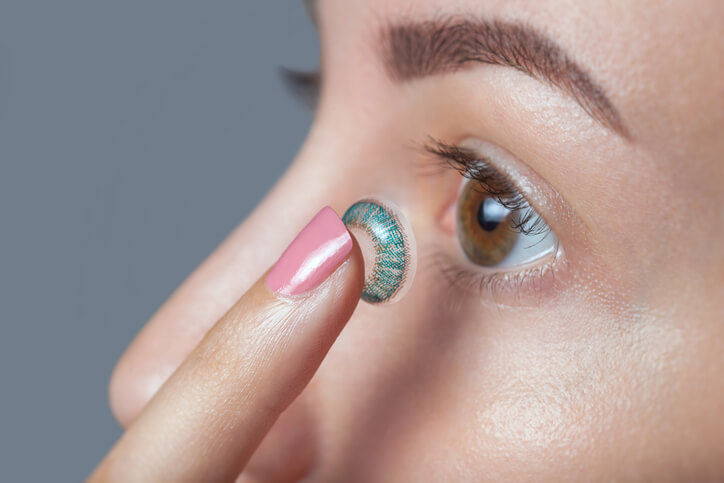
Even after you've done everything right—getting a proper prescription and avoiding the temptation of unsafe colored contacts without a prescription—your responsibility doesn't end there. Proper care is the final, crucial step to ensure your eyes stay healthy and your new look remains stunning. Neglecting this part can turn a safe product into a risky one.
Proper Cleaning and Storage for Your Lenses
Think of your contact lens care routine as a non-negotiable daily ritual. Just as you need to properly clean quality sunglass lenses to see clearly, your cosmetic contacts require even more diligent hygiene since they sit directly on your eyes.
First and foremost, only use the cleaning and disinfecting solution recommended by your eye doctor. Never, under any circumstances, use tap water, saliva, or any other liquid to clean or store your lenses. Tap water can contain a harmful microorganism called Acanthamoeba, which can cause a severe, painful eye infection that may lead to vision loss.
The "rub and rinse" method is essential. After removing a lens, place it in the palm of your clean hand, apply a few drops of solution, and gently rub it with your fingertip for about 20 seconds. This friction is vital for removing protein deposits, makeup residue, and other debris. Afterward, rinse it thoroughly with more solution before placing it in the case.
Finally, your storage case needs attention too. After putting your lenses in, rinse the case with fresh solution—not water—and leave it open and upside down to air dry. It's critical to replace your contact lens case at least every three months to prevent bacterial buildup.
Dos and Don'ts for Contact Lens Wearers
Following a few simple rules of safe usage will protect your eyes from irritation and infection. These habits are essential for anyone wearing cosmetic contact lenses.
Always wash your hands thoroughly with soap and water, and dry them with a lint-free towel before handling your lenses. This prevents the transfer of germs and dirt from your fingers to your eyes.
Do not sleep in your colored contacts unless they are specifically designated for overnight wear and approved by your doctor. Sleeping in standard lenses deprives your cornea of oxygen, which can lead to swelling, discomfort, and increased risk of infection.
Adhere strictly to the replacement schedule. Whether your lenses are daily disposables, weekly, or monthly, replace them on time. Overwearing lenses causes them to degrade, making them less comfortable and more prone to accumulating harmful deposits.
Finally, a rule that can never be broken: Never share your lenses with anyone. Sharing cosmetic contacts, even for a moment, is like sharing a toothbrush. It's a direct way to transmit dangerous bacteria and viruses, potentially leading to serious eye infections like pink eye (conjunctivitis) or even a corneal ulcer.
Your 2025 prescription is the key to safety, and proper care is what maintains it. When you are ready to use that prescription, you'll want a wide selection of safe, FDA-approved options. For a huge variety of styles and colors from reputable brands that all require a valid prescription, check out these high-quality cosmetic contact lenses. This ensures you can confidently find a pair that is both beautiful and meets the highest safety standards for your eyes.
Colored Contacts for Specific Needs
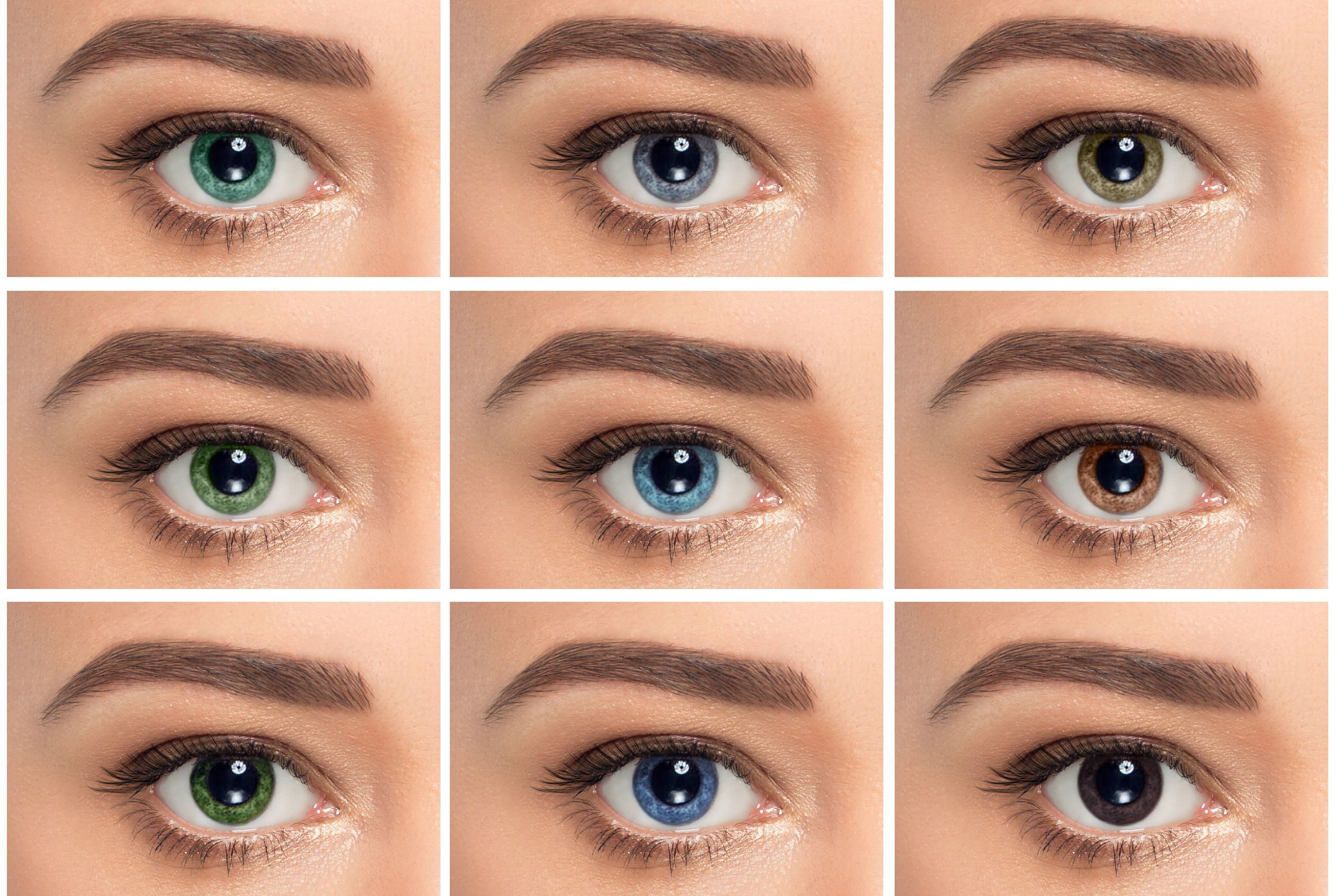
Finding the right colored contacts isn't a one-size-fits-all process. Your natural eye color and specific vision correction needs play a huge role in determining which lenses will work best for you. Whether you have very dark eyes or require correction for astigmatism, there are specialized options designed to provide both a stunning new look and clear, comfortable vision.
Best Colored Contacts for Dark Eyes
Transforming dark brown or nearly black eyes requires a special kind of lens. If you have deep-colored eyes, you've probably wondered if cosmetic lenses can even make a noticeable difference. The good news is, they absolutely can—if you choose the right type.
Options for dark eyes
The key to a dramatic color change for dark eyes is using opaque lenses. Unlike enhancement tints that blend with your natural color, opaque lenses are designed with a solid, non-transparent layer of color to completely cover your natural iris. This allows you to go from deep brown to a vibrant sea blue, a striking sterling gray, or an enchanting emerald green.
When selecting lenses, you must consider the color intensity. Faint or translucent shades simply won't show up on a dark background. Look for vibrant shades specifically marketed for dark eyes. These lenses have a high level of pigmentation to ensure the new color is bold and visible, delivering the complete aesthetic transformation you're looking for.
Colored Contacts for Astigmatism
For years, people with astigmatism were told they couldn't wear soft contact lenses, let alone colored ones. Thankfully, lens technology has advanced significantly, and today there are excellent options available for those who need Colored Contacts for Astigmatism.
Toric lenses for astigmatism
The solution is toric lenses. Astigmatism is caused by an irregularly shaped cornea, which leads to blurry or distorted vision. Toric lenses are specially designed with different powers in different meridians of the lens to correct this specific issue. They are weighted to keep them from rotating on your eye, ensuring your vision remains consistently clear. Just as individuals with presbyopia rely on custom-fit prescribed reading glasses for clear close-up vision, those with astigmatism need the precise fit of a toric lens.
It is absolutely essential to consult an eye doctor for a proper fitting. They will measure your astigmatism and ensure you get a toric colored contact that is comfortable and provides perfect vision correction. It is equally important to choose reputable brands that manufacture high-quality toric lenses. This guarantees both the safety of the cosmetic tint and the effectiveness of the vision correction.
Whether you need powerful opaque lenses or specialized toric contacts for astigmatism, the perfect pair is out there. A valid 2025 prescription is your starting point for finding lenses that meet your unique needs safely. To explore a vast collection of FDA-approved lenses, including vibrant options for dark eyes and choices from brands known for quality, you can find your ideal cosmetic lenses here. Visiting the link allows you to browse styles that cater to specific requirements, ensuring you find a beautiful look without ever compromising on safety or vision.
Where to Buy Colored Contacts (Safely!)
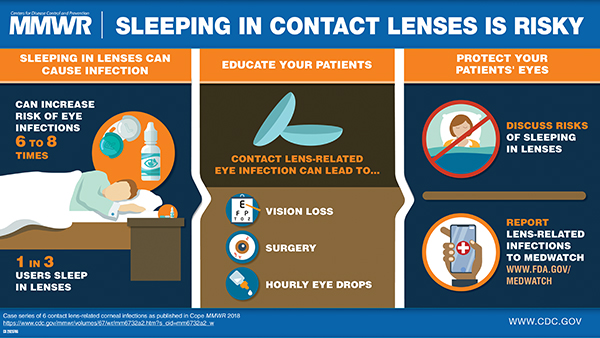
Once you have your prescription, the next step is deciding where to buy your cosmetic lenses. You have two main avenues: purchasing online or buying in-person from an eye care professional's office or optical shop. Each has its own set of advantages and potential drawbacks, and understanding them is key to making a safe and smart choice in 2025.
Online vs. In-Person: Pros and Cons
Choosing between the digital shelf and a physical store involves a trade-off between convenience, selection, and professional oversight.
Online
The primary draw of buying colored contacts online is the sheer convenience. You can browse countless options from the comfort of your home, anytime you want. Online retailers typically offer a much wider selection of brands, colors, and styles than a local optical shop could ever stock.
However, this convenience comes with a significant risk: the internet is filled with unregulated sellers. Sourcing your lenses online means you must be extra vigilant to avoid counterfeit products that could be dangerous to your eyes. The search for colored contacts without a prescription online often leads to these hazardous vendors.
In-person
Purchasing from your optometrist or a licensed optician guarantees a professional fitting. This ensures the lenses are not only safe but also comfortable for your specific eye shape and size. You also get immediate, hands-on assistance with learning how to properly insert, remove, and care for your new lenses. Just as an expert can help you find the perfect style of persol sunglasses to complement your features, an eye care professional provides an essential service for contact lens wearers.
The main downside to buying in-person is that it can be more expensive. The selection might also be more limited compared to the vast catalogs available online.
Spotting Red Flags: How to Avoid Scams
Knowing how to identify a fraudulent seller is the most important skill for buying contacts online. Protecting your vision is paramount, and these tips can help you steer clear of dangerous scams.
Identifying unsafe sellers
The number one red flag is any website, social media page, or novelty shop that offers to sell you colored contacts without a prescription. In the United States, all contact lenses are classified as medical devices by the FDA and legally require a prescription, even if they have no corrective power.
Be wary of unbelievably low prices. If a deal seems too good to be true, it probably is. These bargain-bin prices often indicate that the products are counterfeit, unapproved, and potentially made with harmful materials or dyes. Furthermore, a legitimate business will have a physical address and a customer service phone number clearly listed. If a seller is hard to contact or only communicates through a vague "contact us" form, it's highly suspicious. Always check for reviews and complaints online before buying. A quick search can reveal if other customers have had negative experiences or suffered eye infections after using their products.
To confidently and safely explore the world of cosmetic lenses, it's crucial to use a reputable source that verifies your 2025 prescription. This eliminates the risk of encountering unregulated and dangerous products. To browse a massive, curated selection of beautiful and FDA-approved lenses from trusted brands, you can find a safe marketplace for colored contacts without a prescription here. By visiting this link, you bypass the dangerous sellers and connect directly with verified suppliers who prioritize your eye health, allowing you to achieve your desired look without compromising on safety.
Colored Contacts: Cost and Alternatives
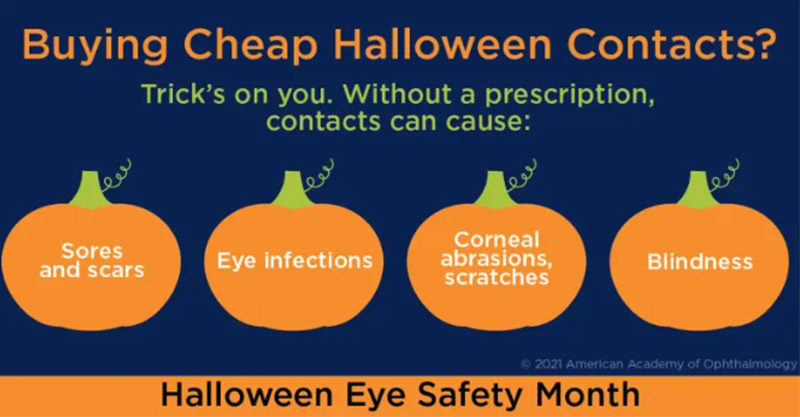
Understanding the financial commitment and exploring other options are crucial steps before you decide to change your eye color. For many in 2025, the journey starts with a search for a great deal, but the real price involves more than just the lenses themselves.
How Much Do Colored Contacts Really Cost?
The price tag on colored contacts isn't a single, simple number. It's a spectrum influenced by several key elements. While the allure of finding cheap colored contacts without a prescription online is strong, the true, safe cost includes mandatory professional oversight.
Cost Factors for Colored Contacts
Lens Type: Your wearing schedule is the biggest price driver. Daily disposables are the most hygienic and convenient, but also the most expensive over time. Monthly lenses offer a better value for regular wearers but require a strict cleaning regimen. Yearly lenses, which are less common now, demand the most care.
Brand: Premium, FDA-approved brands invest heavily in research, development, and high-quality, breathable materials. This commitment to safety and comfort means they will cost more than the questionable, unverified products often found when searching for colored contacts without a prescription.
Prescription and Professional Fees: This is the most important and often overlooked cost. A legal purchase requires a valid prescription, which means paying for a professional eye exam and a contact lens fitting. This fee ensures the lenses fit your eyes correctly, preventing potential damage, and is mandatory even for non-corrective (plano) lenses.
Alternatives to Colored Contacts
If the cost or the idea of wearing lenses isn't right for you, don't worry. There are fantastic ways to enhance your eyes or experiment with your look without ever touching a contact lens.
Options to Consider Instead of Non-Prescription Lenses
Strategic Eye Makeup: You can dramatically change the appearance of your eyes with makeup. Using eyeshadows in colors that contrast with your natural iris will make your eye color pop—think coppers for blue eyes or purples for green eyes. Different eyeliner techniques can also alter the perceived shape and intensity of your gaze.
Photo Editing Fun: For a zero-risk, temporary change, digital editing is your best friend. Apps like Facetune or software like Adobe Photoshop allow you to experiment with any eye color you can imagine. It’s a perfect way to see how you'd look or to have fun with your photos for social media.
Embrace Your Natural Beauty: Your natural eye color is completely unique to you. Learning to love and accentuate it is a powerful form of self-expression. Just as choosing a timeless accessory like classic persol sunglasses can perfectly complement your features, appreciating the beauty you already have is the ultimate style statement.
After weighing the costs and alternatives, if you decide that colored contacts are the right choice, the next step is to find them affordably and safely. Understanding the price factors helps you budget for a quality product and avoid the dangerous gamble of unregulated sellers. To find a wide selection of stunning, FDA-approved lenses at various price points, you can browse a curated collection of cosmetic contact lenses here. Visiting this marketplace allows you to confidently compare costs from reputable brands, ensuring you get the look you want without sacrificing your eye health or budget.
Crazy Colored Contacts Confessions: Real Stories & Regrets!
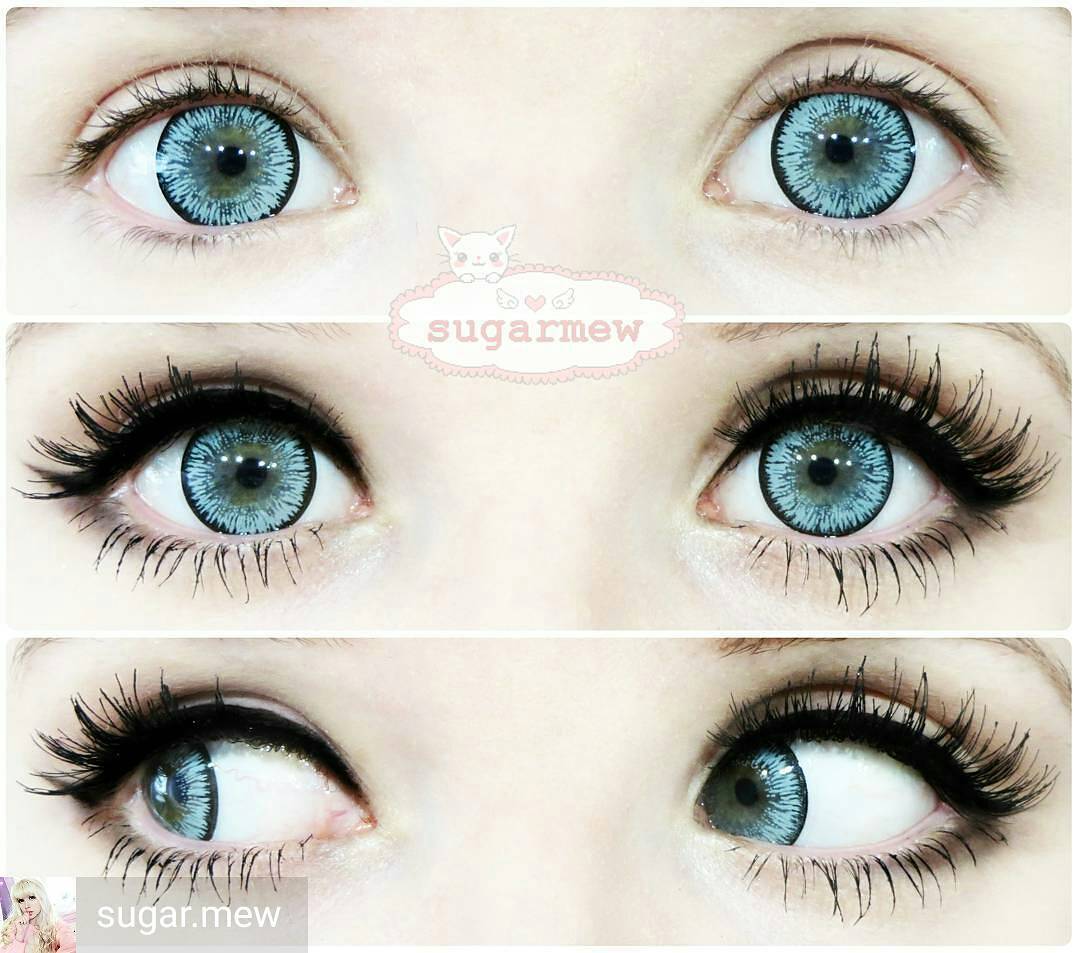
The internet is filled with tempting offers for cosmetic lenses, but behind the vibrant colors and low prices lies a dark side. The search for colored contacts without a prescription can lead down a dangerous path. These are not just fashion accessories; they are medical devices, and treating them otherwise can have devastating consequences.
Real-Life Horror Stories of Using Unregulated Lenses
Before you click "buy" on that suspiciously cheap pair of fashion contact lenses, consider the real-world consequences shared by those who've made that mistake. These accounts are a stark reminder of what's at stake.
Case studies of eye damage
Infections Leading to Corneal Ulcers: One of the most common and painful outcomes is a corneal ulcer, which is an open sore on the cornea. This often happens when bacteria gets trapped under a poorly-fitting, non-prescription lens. Users have reported excruciating pain, the feeling of something constantly scratching their eye, and a pus-like discharge, sometimes requiring months of intensive antibiotic treatment to avoid permanent scarring.
Vision Loss from Poorly Fitted Lenses: A "one-size-fits-all" approach does not work for contact lenses. A lens that is too tight can choke off the oxygen supply to your cornea, a condition called hypoxia. This can cause tiny blood vessels to grow into your cornea in an attempt to supply oxygen, blurring your vision. Some users have experienced permanent hazy vision from lenses they bought online without a proper fitting from an optometrist.
Allergic Reactions to Toxic Dyes: Legitimate, FDA-approved colored contacts use safe, encapsulated color pigments. Illegally sold colored contacts without a prescription, however, are often printed with industrial-grade dyes that can leach directly into your eye. People have reported severe allergic reactions, including painfully swollen eyelids, chronic redness, and a burning sensation that only stopped when they threw the toxic lenses away.
Learning from Others' Mistakes with Non-Prescription Colored Contacts
The terrifying experiences of others provide a clear roadmap for how to enjoy colored contacts safely. Protecting your vision in 2025 is paramount, and these key takeaways are non-negotiable.
Key takeaways
Always Get a Prescription: This is the most crucial step. A prescription for colored contacts contains more than just vision correction power; it includes the specific measurements of your eye, like base curve and diameter, to ensure a safe fit. Just as you need a valid prescription to safely purchase prescription eyeglasses online, the same medical standard applies to all contact lenses, even non-corrective (plano) ones.
Buy from Trusted Sources: A reputable seller will always require you to provide or verify your prescription. Avoid vendors on social media marketplaces, third-party auction sites, or any online store that skips this verification step. Doing so is the only way to avoid counterfeit products and ensure the lenses are FDA-approved.
Follow Care Instructions: Your eye doctor will provide instructions on how to clean, disinfect, and store your lenses. Never use tap water, always use fresh solution, and never wear your lenses longer than recommended. This simple hygiene prevents the kinds of nasty infections mentioned earlier.
When in Doubt, Consult an Eye Doctor: If you experience any redness, pain, or changes in vision, remove the lenses immediately and call your optometrist. Don't try to "wait it out." Professional advice is essential to prevent a minor issue from becoming a major regret.
To avoid these horror stories and ensure you are only buying safe, legitimate products, it's vital to use a marketplace that vets its sellers and requires a prescription. You can explore a huge selection of beautiful and, most importantly, FDA-approved lenses by browsing for colored contacts without a prescription here. Visiting this link ensures you are connecting with trusted vendors who prioritize your eye health, allowing you to find the perfect new eye color with confidence and security.
Your Ultimate Guide to Buying Colored Contacts Safely
In summary, while the idea of purchasing colored contacts without a prescription is tempting, it's a dangerous misconception. All contact lenses, including non-corrective cosmetic ones, are classified as medical devices by the FDA and legally require a valid prescription to ensure a proper and safe fit. The most significant takeaways from this guide are:
- Prioritize Safety Over Shortcuts: Bypassing a prescription exposes you to severe risks, including painful eye infections, corneal abrasions, and even permanent vision loss from ill-fitting or counterfeit lenses.
- A Prescription is Your Key: A professional eye exam and fitting are not obstacles; they are your passport to safety. The prescription contains your unique eye measurements (base curve and diameter) necessary for a lens that won't harm your cornea.
- Choose Reputable Retailers: Always purchase from a source that requires prescription verification. This is the clearest sign of a legitimate seller who provides FDA-approved, safe products, unlike unregulated online vendors or flea markets.
- Proper Care is Non-Negotiable: Once you have your lenses, your responsibility continues. A strict hygiene routine—including proper cleaning, disinfecting, and storage—is essential to prevent infections and keep your eyes healthy.
By following these steps, you can confidently and safely transform your look. You don't have to sacrifice style for safety; the two go hand-in-hand when you respect the process. Armed with the right knowledge and a valid prescription, you can unlock a world of vibrant, stunning, and, most importantly, safe cosmetic lenses.
评论
发表评论